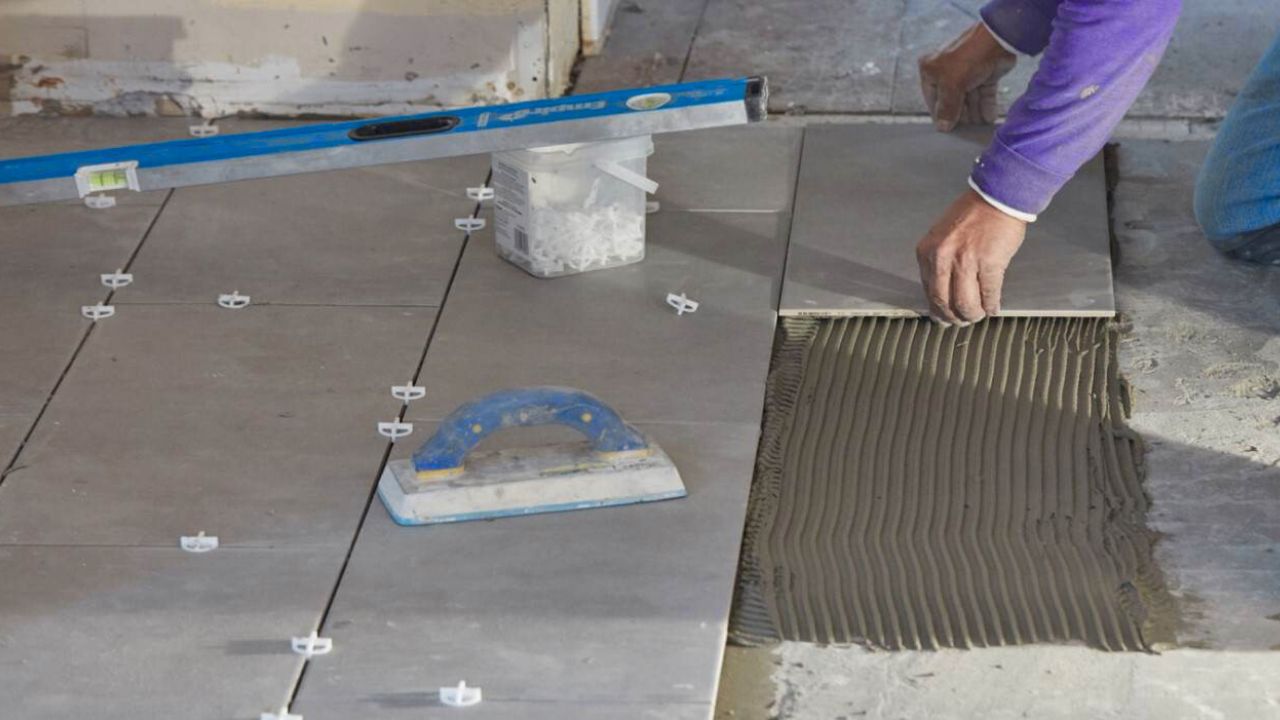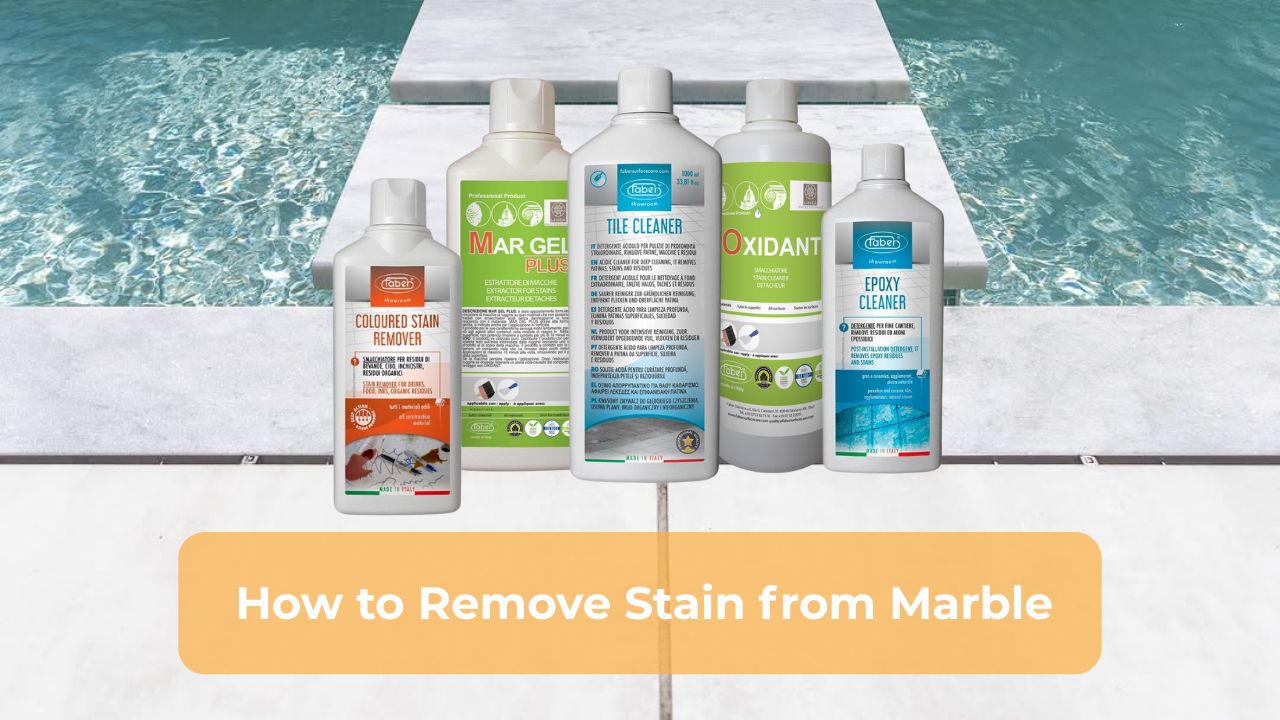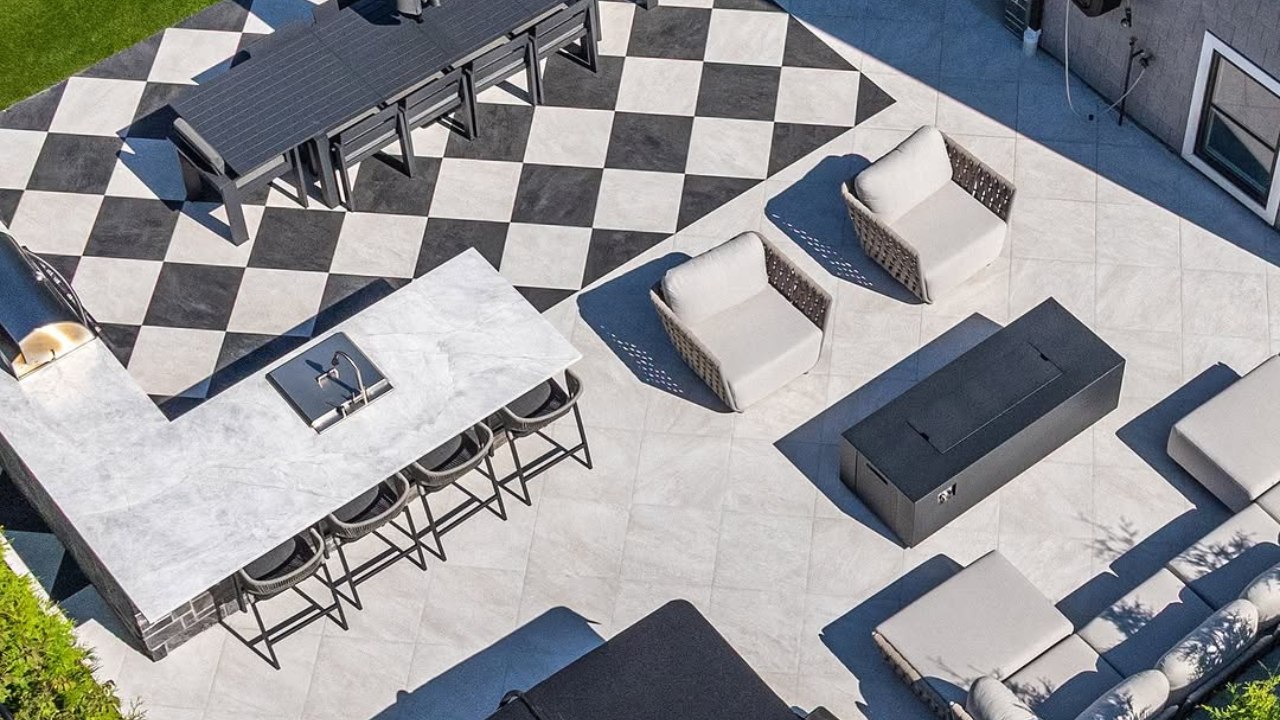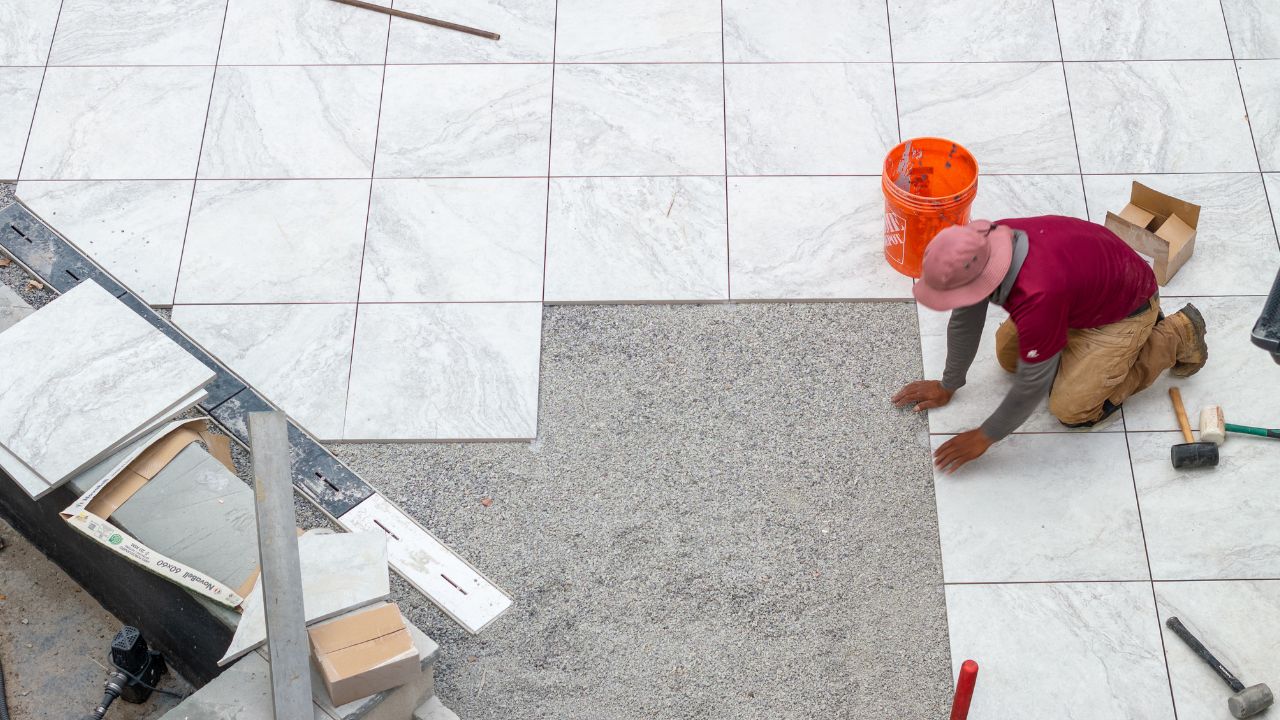Porcelain pavers and tiles are generally durable and offer exceptional strength compared to concrete pavers. They can withstand harsh weather, wear and tear, water damage, and chips. Cracks often appear from subbase movement, heavy impact, poor installation, or thermal expansion. Outdoors, freeze-thaw cycles on the patio or outdoor porcelain pavers can add pressure. Indoors, dropped objects or uneven substrates often lead to cracks.
To fix the cracked porcelain, understand the root cause first to prevent future damage. This will help you determine if repairs or replacement is the better solution.
Tools and Materials Required to Fix Cracked Porcelain
Here’s what you’ll need for a professional-level repair:
| Tools | Purpose | Materials | Purpose |
| Utility knife / Dremel | Widening the crack slightly | Isopropyl alcohol | Removing dust, oils, and moisture |
| Vacuum / Brush | Cleaning debris from the crack | Color-matched filler | Epoxy or urethane-based filler for the crack |
| Putty knife | Applying and leveling the filler | Sealant | Protecting joints from moisture |
| Sanding block (fine) | Smoothing the surface after curing | Grout (if reapplying) | Filling joints if the tile or paver was replaced |
How To Repair a Cracked Porcelain Tile or Paver
Follow these steps for a clean and long-lasting solution to fix cracked porcelain pavers and tiles.
Assess The Crack
When you notice the crack in the porcelain paver or tile, check it promptly. Check the cracked area, is it visible or just a hairline crack? Hairline cracks are typically caused by impact, weather damage, or improper placement of tiles and pavers. Check the damage thoroughly for a better idea.
Clean the Crack
Before applying any repair material, the surface must be free of dust, debris, and oils.
- Start by gently scraping the crack with a utility knife or a flathead screwdriver to remove any loose particles or crumbling glaze.
- Use a vacuum cleaner with a narrow nozzle or a stiff brush to clear the debris from the crack and the tile surface.
- Wipe the area using a cloth dampened in isopropyl alcohol (at least 70%) to remove any grease or residue.
- Air dries the area completely. Any trapped moisture inside the crack will prevent proper bonding and may cause the filler to lift over time.
- Do not use water to clean before the repair. Leftover moisture will weaken the adhesion.
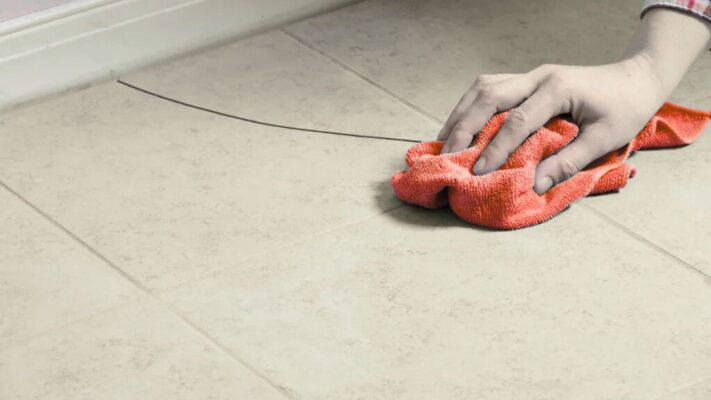
Widen Slightly for Adhesion
Now use the blade tip or rotary tool to slightly widen the crack. This will help the filler bond better.
- Make a slight V-shaped groove, no deeper than 1/8 inch. Avoid damaging the surrounding tile.
- This step is especially useful for hairline cracks, where the filler may not properly adhere unless the opening is slightly enlarged.
- Do not use excessive force. The goal is to give the filler enough room to grip, not to break the tile further.
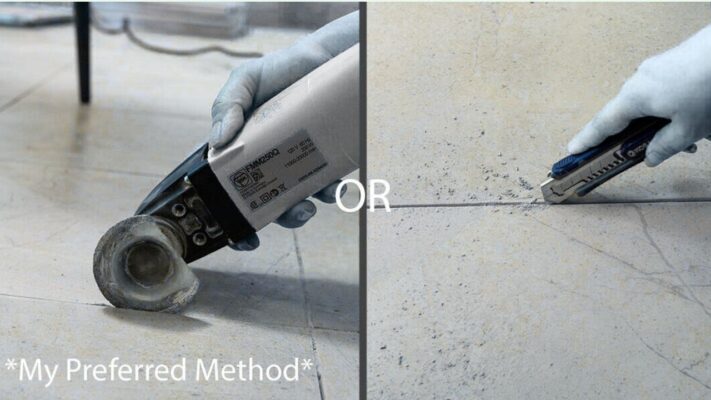
Fill the Crack
- Epoxy is an optimal choice for porcelain cracks. Go for a color-matched epoxy or urethane filler.
- Apply it with a putty knife.
- Push it into the crack and smooth it level with the porcelain tile surface.
- Smooth the surface flush with the surrounding tile. Remove any excess immediately with a damp cloth before it starts to harden.
- Don’t rush. Make sure the filler is well-packed into the crack to avoid hollow spots or bubbles.
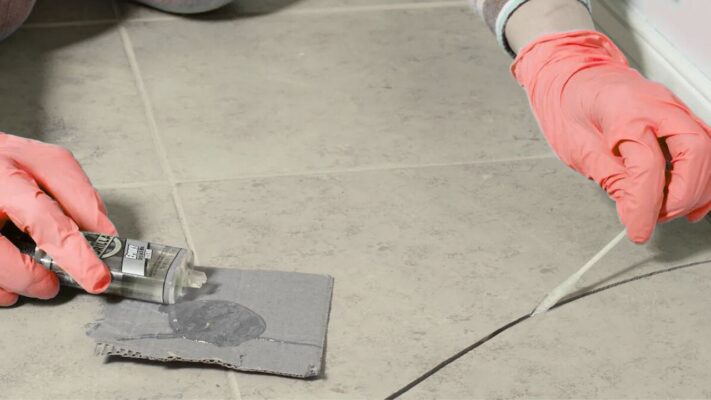
Let It Cure
Once the solution is applied, allow it to dry fully. Different filler takes different times to cure:
- Epoxies: 12 to 24 hours
- Urethane: 6 to 12 hours
- Quick-set repair kits: as fast as 30 minutes
- Follow product instructions for curing times.
- Avoid walking on or placing anything over the repair while it cures.
Keep the area dust-free during this time to avoid debris sticking to the wet filler. For outdoor jobs, choose a dry, shaded day. Avoid working in direct sun or rain.
Sand and Touch Up
Once cured, sand it with the fine-grit sandpaper to smooth any excess filler.
- Work slowly and in small circular motions.
- Wipe away sanding dust with a dry microfiber cloth.
- For glossy tiles, apply a porcelain glaze touch-up pen to paint the repaired porcelain cracks. This will match the colour of the pavers or tile (if required)
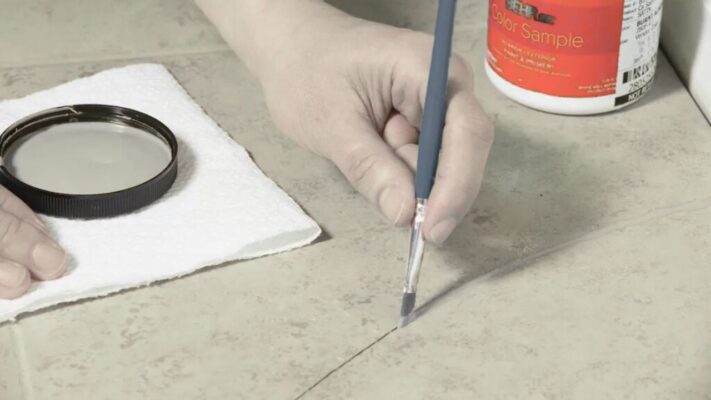
Seal the Joints
If the tile is near a wet zone (e.g., pool deck or bathroom), apply a joint sealant. This prevents moisture from entering the repaired area.
- Use a clear silicone joint sealer or penetrating grout sealer.
- Apply a small bead along the tile edge or grout line, especially near the crack repair.
Though porcelain does not require sealing, doing it will keep it in good condition for years to come. This is especially beneficial for outdoor porcelain.
Why Do Porcelain Tiles and Pavers Crack?
Porcelain tiles and pavers are durable but can crack due to impact, poor subfloor preparation, or shifting foundations.
Heavy loads, like furniture or vehicles, may cause stress over time. Outdoors, temperature changes and freeze-thaw cycles can expand moisture beneath the surface, which results in cracking the tile or causing minor damage like chipping. If you’re dealing with surface chips, learn how to fix outdoor paver chips for a fast and lasting repair.
In some cases, installation errors such as using the wrong adhesive or skipping expansion joints create pressure points that also cause cracks in the tile. Just make sure to understand the actual reason for cracking so you can.
When To Repair And When To Replace Porcelain Tiles and Pavers
Porcelain is already strong and durable, with crack resistance. But due to improper installation or heavy impact, you may either want to repair or replace porcelain tiles and pavers. But there are some exceptions. Check the following table for a better idea.
| Repair Porcelain Tiles And Pavers When | Replace Porcelain Tiles And Pavers When |
| Small surface cracks or hairline damage are visible | The crack goes through the full depth of the tile or paver |
| Damage is cosmetic and doesn’t affect function | Multiple tiles show cracks or form a spreading pattern |
| The tile is firmly bonded and not loose | The tile feels hollow or moves when tapped |
| The layout must stay intact (e.g., heritage patterns) | Structural integrity or safety is compromised |
| Quick aesthetic fixes are needed before major work | The base beneath the tile has shifted or failed |
How To Prevent Future Cracks In Porcelain Pavers And Tiles?
You can fix cracked porcelain, but it is better to prevent this to save cost and time:
- Use uncoupling membranes during installation to prevent movement.
- Check that the substrate is level and solid before laying tile.
- Avoid dragging heavy furniture or planters across tiled areas.
- For outdoor pavers, ensure proper drainage and spacing.
- Seal joints every few years to keep moisture out.

FAQs About Fixing Cracked Porcelain Pavers And Tiles
Let’s answer the most asked questions about fixing cracked porcelain.
What’s the best filler for cracked porcelain tile?
An epoxy-based, color-matched filler designed for ceramic or porcelain surfaces works best. For outdoor pavers, you can use urethane fillers, which are flexible and weather-resistant.
Can you fix hairline cracks in porcelain?
Yes, hairline cracks can be filled with clear epoxy or porcelain repair kits. The repair may be invisible if done carefully.
Should we leave a cracked tile or paver?
No. Even a small crack can let the water seep in, which leads to more damage, especially outdoors.
Do porcelain pavers crack easily?
No. Porcelain is dense and strong, especially in 20mm outdoor pavers. However, improper installation, shifting bases, or impact can cause cracks.
How long does a porcelain tile repair last?
With proper prep and the right materials, a porcelain tile or paver repair can last several years, sometimes as long as the tile itself.
Can I replace just one tile or paver?
Yes. If the tile or paver is isolated, it can be removed and replaced with minimal disruption, especially if installed with pedestal paver systems or dry lay methods.
Bottom Line
Porcelain pavers and tiles are durable and offer great strength. But when you notice a crack on a tile or pavers, you don’t have to replace the entire floor or area tiles. With the right tools and materials, you can repair many types of porcelain cracks and keep your space looking clean and safe. Understand the cause to fix cracked porcelain, match the filler, and seal your work for lasting results. Whether you’re managing a project or fixing a backyard paver, the key is care and precision.

